Are Russian Blue cats hypoallergenic? Sickness Symptoms of Russian
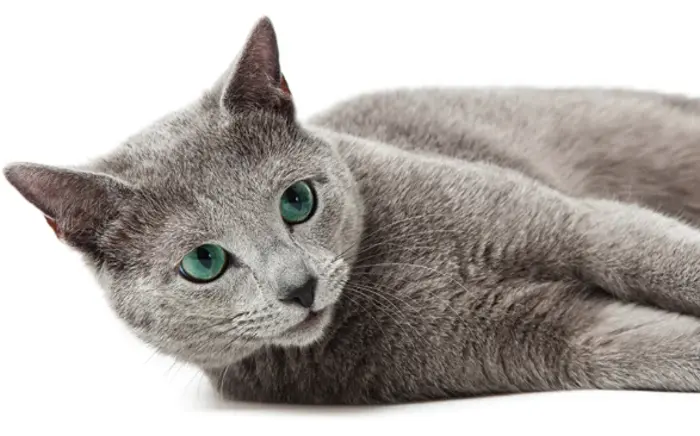
Cat allergies affect millions worldwide, making it difficult for them to adopt feline companions. However, one breed is said to Be Are Russian Blue cats hypoallergenic? With their strikingly beautiful blue-grey coat and piercing green eyes, these cats have become popular among cat lovers. But are these claims of hypoallergenic faithful? In this article, we will look in-depth at the Russian Blue cat and determine if it is genuinely hypoallergenic or just a myth.
Are Russian Blue Cats Hypoallergenic?
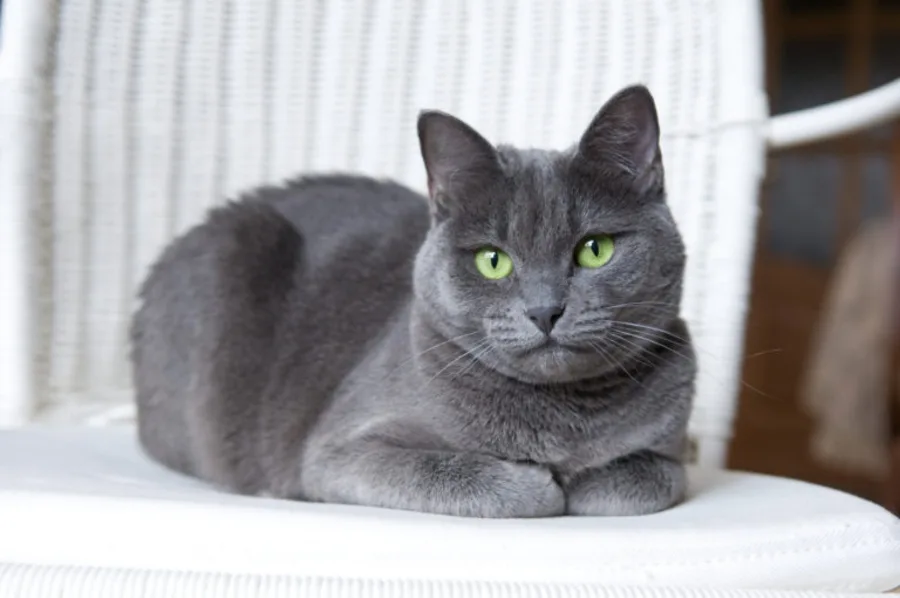
Before delving into whether, are Russian Blue cats hypoallergenic, it is essential to understand what hypoallergenic means. A hypoallergenic cat produces less allergen protein Fel D1 in its saliva and skin glands. This protein triggers allergies in humans.
When cats groom themselves, they spread this protein through their coat, causing a reaction in sensitive humans. A hypoallergenic cat produces lower levels of this protein, making it less likely to cause an allergic reaction.
The Myth are Russian Blue Cats Hypoallergenic
Many cat breeds have been marketed as hypoallergenic, but the truth is that no cat is completely allergen-free. It is just not biologically possible. Even hairless cat breeds, like the Sphynx, produce Fel D1 protein in their saliva.
However, some cats produce less of this protein, which is where the term “hypoallergenic” comes from. It is important to note that even if a cat is labeled as hypoallergenic, there is still a chance that it may trigger allergies in some individuals.
The Allergen Protein Fel D1 in Russian Blue Cats

Now, let’s focus on the Russian Blue cat and see how it fares in terms of producing the allergen protein Fel D1. This breed has a dense, short, and plush coat, making it hard to believe it produces less Fel D1 protein than other breeds. However, research shows Russian Blue cats produce lower levels of this protein, potentially making them less allergenic.
One study published in the Journal of Allergy and Clinical Immunology found that Russian Blue cats produce six times less Fel D1 protein than mixed-breed cats. This is due to a genetic mutation that controls the production of this protein.
The same study also found that male cats produce higher protein levels than female cats. This means female Russian Blue cats maybe even less allergenic than males.
Russian blue cat sickness symptoms
With their elegant demeanor and captivating green eyes, Russian Blue cats are a beloved breed among cat enthusiasts. While they are generally known for their excellent health and longevity, pet owners must stay informed about potential health issues and recognize the signs of sickness.
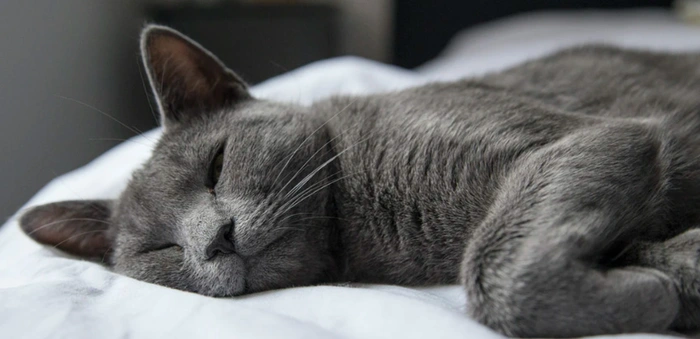
Early detection can make a significant difference in treatment and recovery. Here are key symptoms that indicate your Russian Blue cat may be experiencing health issues:
Changes in Appetite or Drinking Habits
Any significant increase or decrease in appetite or water consumption can indicate illness. Decreased appetite could indicate dental, digestive, or systemic issues. Increased thirst can be a symptom of diabetes or kidney disease.
Weight Loss or Gain
Even if the cat’s eating habits haven’t changed, unexpected weight loss or gain can signal health issues. Weight loss may be related to metabolic disorders, cancer, or gastrointestinal problems, while weight gain could suggest obesity or other metabolic diseases.
Altered Behavior
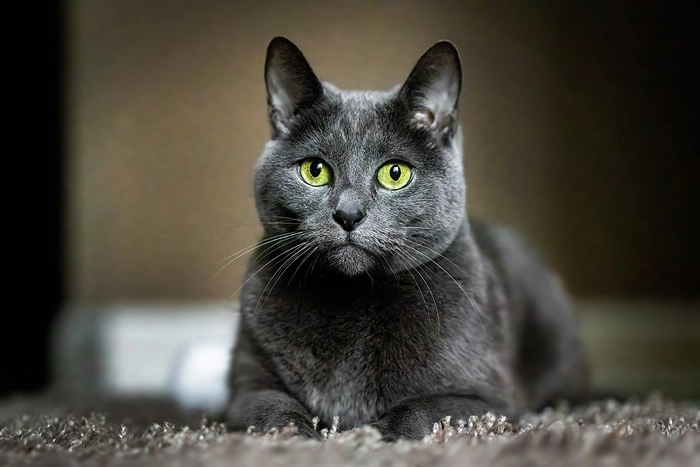
Changes in behavior, such as increased lethargy, aggression, or hiding, can indicate that your Russian Blue is not feeling well. Cats often hide their discomfort, so these behavior changes can be a crucial indicator of underlying problems.
Respiratory Symptoms
Coughing, wheezing, or labored breathing can be signs of respiratory issues, such as asthma or bronchitis, which are known to affect Russian Blues due to their fine coats and potential for allergic reactions.
Digestive Issues
Vomiting, diarrhea, constipation, or any other noticeable change in bowel movements should be taken seriously. These symptoms can be caused by a variety of issues, from dietary indiscretions to more severe health conditions like kidney disease or gastrointestinal blockages.
Urinary Problems

Difficulty urinating, frequent urination, or blood in the urine can be symptoms of lower urinary tract disease or kidney issues. These conditions can be severe, mainly if a urinary blockage occurs.
Skin and Coat Changes
A dull coat, hair loss, or rashes or sores can indicate various health issues, including allergies, parasites, or systemic diseases. Russian Blues are known for their beautiful coats, so any deterioration in coat quality should be investigated.
Dental Problems
Bad breath, difficulty eating, or visible tartar on the teeth can signify dental disease. This condition is common among cats and can lead to more severe health issues if left untreated.
Eye or Ear Discharge
Any discharge from the eyes or ears, along with signs of discomfort or frequent scratching, can indicate infections or allergies.
Changes in Mobility
Difficulty jumping, limping, or reluctance to move can be signs of arthritis, injury, or other musculoskeletal issues.
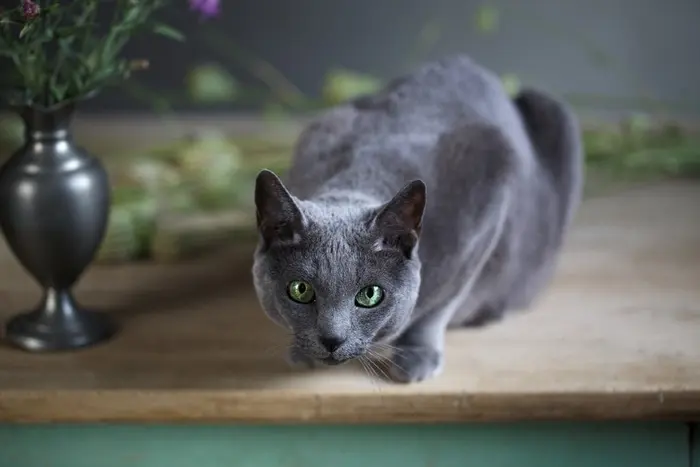
Recognizing these symptoms early and consulting with a veterinarian can ensure that your Russian Blue receives the necessary care. Regular check-ups, preventive care, and a healthy lifestyle are crucial to managing health risks and ensuring your cat enjoys a long, happy life.
Conclusion
In conclusion, Are Russian Blue cats hypoallergenic may be considered due to their lower allergen protein Fel D1 levels. However, this does not mean that they won’t trigger allergies in some individuals. It is important to note that every person is different and may react differently to cat allergens, even within the same breed.
So, before bringing a Russian Blue cat into your home, it is crucial to spend time with the breed to see how your allergies are affected. Proper grooming and regular cleaning can also help reduce allergens in your home. Considering these factors, you can decide whether a Russian Blue cat is the right fit for you.




